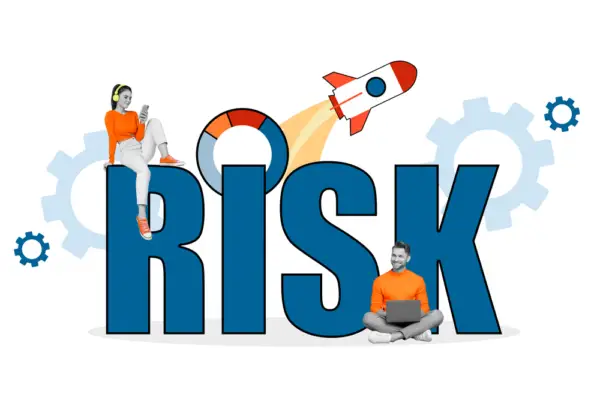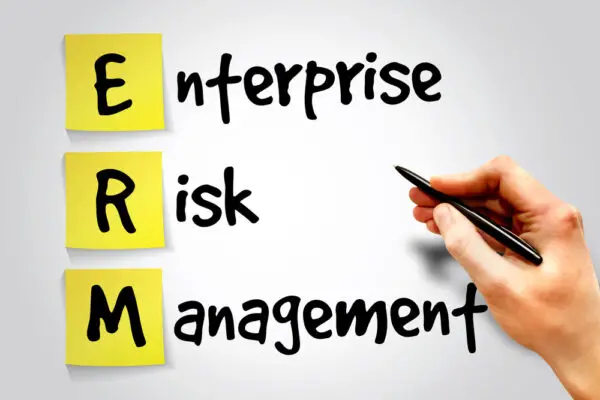In the complex world of business today, risk management has become a critical focus. Amidst all the tools available for risk management, one stands out for its effectiveness: the Risk Control Self-Assessment (RCSA) Audit.
RCSA risk control self-assessments are an enviable tool for identifying, managing and assessing risk at various levels in a collective way. Improves value by the organizational risk appetite increasing operating group involvement in the design and maintaining risk systems and determining risks to the business.
Ultimately, it aims to incorporate risk management principles into employees’ risk managers‘ jobs and business units’ achievement of objectives. Provides an environment for management and employees.
This blog post aims to demystify the RCSA Audit and provide a comprehensive understanding of its significance, stages, standards, benefits, challenges, and steps to undertake it.

What is Risk Control Self Assessment? And what are the benefits?
RCS’s operational risk evaluation processes are utilized to assess operational risk and assess the effectiveness of organizational control measures in managing these risks. It provides numerous advantages and helps organizations and operational risk managers improve control and reduce costs.
However, the RCSA is not a standalone operation, but must also fit into the business unit operations risk management plan. As a result, it can help evaluate operational risks and identify weak controls and can contribute to improving the company’s risk culture.
RCSA Workflow
The RCSA workflow starts by identifying the risks faced by the RCSA entities, and once these risks are identified, they need to be assessed against key risk indicators and business objectives. After this assessment has been completed, controls can then be identified for each risk.
The process of Risk and Control Self Assessment (RCSA) involves documenting and defining the risks, assessing them against key business objectives, reviewing and rating them, and finally monitoring any changes in risk levels over time.
This helps Risk Identification” href=”https://riskpublishing.com/approaches-and-tools-for-risk-identification/” rel=”noopener”>organizations to identify areas of potential risk
that may need to be addressed or monitored more closely. It also allows organizations to take proactive steps to reduce their risk exposure due to these risks.It’s a process that follows this one:
Identify risk and assess risks identified against key business objectives
The company must assess the operational risks associated with its product or activities. Identify this risk from diverse sources such as audit reports, real losses experience, internal and external auditors and regulatory reviews. After identifying if a risk exists, determine its degree — high, mid, and low risk.
Identify controls for each identified risk
Business lines analyze the current system to both identify risks and document the control environment. Identify controls to mitigate each of the listed risks. Documentation of attribute values for control.
Assess controls
When identified check whether controls work in the way they were intended at the time they are implemented. The purpose of Self-Referral is to integrate the entire review process and provide managers with detailed reports on overall quality and progress in the control process.
In addition to improving the overall quality of the Control System in a given business segment, the quality of its controls is considered inadequate and typically evaluates inherent risk. After applying existing controls, evaluate other risks and their levels. The process should determine the appropriate risk owners responsible for managing a particular risk.
Monitor results
Management is responsible for monitoring remedial actions to address any control weaknesses and rectify them. Business-related documentation is used when a project falls short of the targets agreed upon.
A Risk Management Team is required periodically for monitoring and corrective action. Ensure the surveillance is documented.
What is the RCSA Audit?
The Risk Control Self Assessment (RCSA) audit is a process used to identify and evaluate operational risks and Risk Assessment” href=”https://riskpublishing.com/definition-of-control-risk-and-risk-assessment/”Risk Assessment” href=”https://riskpublishing.com/definition-of-control-risk-and-risk-assessment/”>>assess the effectiveness of risk management controls. It is an empowering method/process by which management and staff of all levels collectively identify and analyze operational risks.
The RCSA process involves six steps: identifying risks, assessing risk levels and associated controls, determining control objectives, evaluating existing controls, developing action plans for mitigating risks and monitoring the implementation of those plans.
The RCSA audit is a valuable tool for meeting corporate governance requirements as it provides insight into potential areas of operational risk events that could have an impact on the organization. It also helps ensure that any necessary changes are implemented in a timely manner to reduce the likelihood of losses due to operational risk.
Overall, the RCSA audit is an effective way to ensure that organizations are taking the necessary steps to protect their operations from potential risks. By using this process, organizations can be better prepared to handle any unexpected events or situations that may arise in the future.
The RCSA Audit is a powerful tool used by businesses to identify, assess, control, and report risks. Unlike traditional audits that often focus on historical data, the RCSA Audit is proactive. It equips businesses with the ability to foresee and manage potential risks, thereby enhancing their operational efficiency and resilience.

The RCSA Audit Stages
The RCSA Audit process involves four crucial stages:
Risk Identification: Here, businesses identify all potential risks that could disrupt their operations. This can include financial, operational, technological, legal, or environmental risks, among others.
Risk Assessment: Once residual risk is identified, each risk is evaluated based on its potential impact and the probability of its occurrence. This assessment helps prioritize the risks that require immediate attention.
Control Assessment: Businesses then devise control measures to mitigate each identified risk. These measures must be robust, effective, and constantly updated to the changing business environment.
Risk Reporting: After the control measures are in place, businesses report the risks, their potential impacts, and the control measures to all relevant stakeholders. Transparency in reporting ensures everyone understands the operational risk management landscape of the business.
Standards to be Followed
Businesses must adhere to various standards and regulations concerning the RCSA Audit. Regulatory bodies like the Basel Committee on Banking Supervision (BCBS) and the Office of the Comptroller of the Currency (OCC) provide guidelines to ensure uniformity and compliance. Non-compliance can lead to legal repercussions, reputational damage, and financial losses.
Benefits and Challenges of RCSA Audit
The benefits of undergoing an RCSA Audit are manifold. It promotes a culture of risk awareness, enhances operational efficiency, and ensures regulatory compliance. Further, it fosters transparency and accountability, building stakeholder trust.
However, businesses may face challenges during the process. These can include resource allocation, staff training, and time commitment. To overcome these challenges, businesses must foster a risk-aware culture, provide adequate training, and prioritize risk management in their strategic planning.
Steps to Undergo RCSA Audit
To undergo an RCSA Audit, follow these steps:
Understand your business environment: Identify your business’s operational areas and understand the risks associated.
Identify the risks: List all potential risks your business may face.
Assess the risks: Evaluate each risk based on its potential impact and the probability of occurrence.
Establish controls: Develop effective control measures to mitigate each risk.
Report the risks: Inform all stakeholders about the risks and the control measures in place.
Case Study: Impact of RCSA Audit on Businesses
A real-life example that illustrates the benefits of RCSA Audit is the case of a multinational bank that faced significant operational risk due to non-compliance with regulatory norms.
After undergoing an RCSA Audit, the bank identified the areas of non-compliance, implemented effective control measures, and avoided potential financial institutions legal repercussions. As a result, the bank enhanced its operational efficiency and stakeholder trust.
RCSA Audit Statistics and Trends
Recent statistics indicate a growing trend of businesses adopting RCSA Audits. A study conducted by the Financial Stability Institute (FSI) revealed that 80% of businesses that adopted RCSA Audit experienced improved operational efficiency and reduced risk incidents. This demonstrates the growing recognition of the value of RCSA Audit in today’s risk-laden business environment.
The trends in the field also indicate a shift towards integrating RCSA Audit with technology. Many businesses are now using advanced analytics, artificial intelligence, and machine learning to streamline the RCSA process, improve risk identification and assessment, and automate their risk assessments and reporting.

Conclusion
In conclusion, the RCSA Audit is an essential tool for modern businesses to proactively manage risks. It enables businesses to identify potential risks, assess their impact, implement effective controls adequately address risks, and report the risks transparently. While the process can pose certain challenges, the benefits of enhanced risk awareness, improved operational efficiency, and regulatory compliance far outweigh them.
As risks in the business environment continue to evolve, the role of RCSA Audit becomes even more critical. Therefore, businesses must consider adopting RCSA Audit as an integral part of their risk management strategy. By doing so, they not only safeguard their operations but also build a resilient business that can withstand the test of time.
Further Reading and Resources
For more detailed understanding and in-depth knowledge about RCSA Audit, you may refer to the following resources:
Remember, knowledge is the key to successful risk management. The more you understand about the RCSA Audit, the better equipped you’ll be to implement it effectively in your business. So keep learning, keep growing, and keep your business safe and sound in this risk-prone world.
There you have it! A comprehensive guide to understanding RCSA Audit. We hope you found this blog post informative and useful. Stay tuned for more insights and knowledge-filled posts on operational risk management framework and business resilience.

Chris Ekai is a Risk Management expert with over 10 years of experience in the field. He has a Master’s(MSc) degree in Risk Management from University of Portsmouth and is a CPA and Finance professional. He currently works as a Content Manager at Risk Publishing, writing about Enterprise Risk Management, Business Continuity Management and Project Management.

